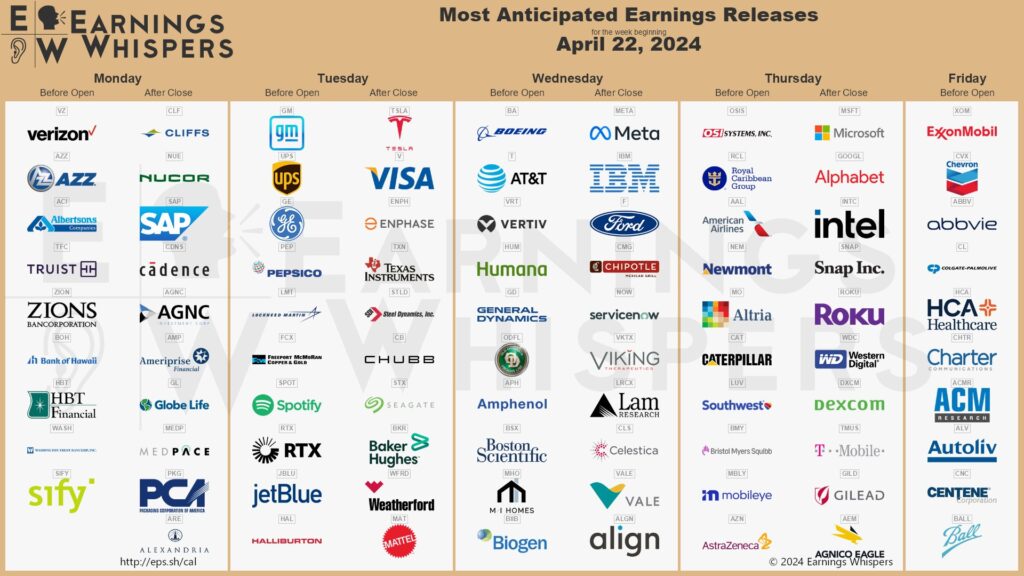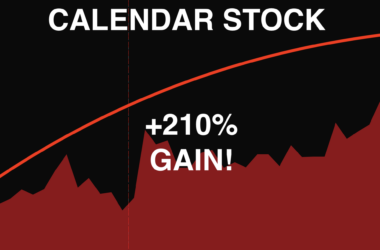
Good morning, traders…
Jeff here.
I’ve said it before and I’ll say it again: If you trade options like stocks, you’re setting yourself up for disaster.
But it can be tough for newbie options traders to differentiate between the two.
Understanding the options market is complex, and learning its intricacies can be overwhelming.
One surprising element that often catches traders by surprise is a phenomenon called Implied Volatility Crush, or “IV Crush” for short.
It’s essential for anyone getting into options trading to understand IV Crush.
If you don’t, you might face a shocking loss that could’ve been easily avoided — especially during earnings season, which is heating up as we speak…

And with the CBOE Volatility Index (INDEXCBOE: VIX) currently surging to its highest level since November 2023 — bringing options premiums up with it — it’s even more crucial to be cautious about volatility in this environment.
With that in mind, let’s break down everything you need to know about IV Crush (and how to avoid it this earnings season)…
Volatility in the Options Market
First, we need to understand what implied volatility (IV) means.
In simple terms, volatility refers to how much the price of something like a stock changes.
When we talk about IV in options, we’re discussing the expected future changes in the share price.
In other words, IV doesn’t tell us if the stock price will go up or down — it predicts how big the price changes might be in the future.
IV is shown as a percentage. A high IV means the market expects big price changes in the stock.
A low IV means that the market expects the stock to be more stable, with smaller price changes.
How IV Builds: Uncertainty and Speculation
Above all else, IV is driven by uncertainty.
Let’s say a major tech company is about to announce its quarterly earnings…
In anticipation, traders wonder if the company will do better than expected (or worse)…
This uncertainty, the collective “not knowing,” often makes IV go up because traders expect the stock to move significantly once the earnings are announced.
In the time leading up to big announcements like this, more people want to buy options, hoping to make money from the expected large changes in stock price.
This increased demand, along with the uncertainty about what’s going to happen, can make the cost of options go up.
And this is where it gets hairy for options buyers…
How IV Gets Crushed: The Aftermath
When the event we’re waiting for, like the tech company’s earnings announcement, finally happens, the uncertainty goes away.
The market now has the information it was looking for.
The stock price will change based on this new information, but at the same time, IV often drops quickly.
Why? Because the main reason for the uncertainty is now resolved.
The market knows what’s going on, so there’s less guessing and less expectation of big future price changes in the stock.
This sharp drop in IV is what we call IV Crush, and it makes all option prices drop a lot…
The Implications of “IV Crush” for Traders
For options traders, especially those who bought options before the big event, IV Crush can have a big impact.
The cost of an option isn’t just based on the stock price compared to the option’s strike price. Other things also affect it, and IV is one of the most important.
When IV is high before an uncertain event, it makes the option more expensive. But when IV drops suddenly after the event — even if the stock moves as the trader hoped — the drop in IV can make the option’s price fall a lot.
So, you could end up losing money on your option because of the IV crush, even if you guessed the stock’s direction correctly.
For instance, imagine you bought a call option on the aforementioned tech company, expecting the stock price to rise after the earnings announcement.
You were correct, and the stock price did rise. But if IV fell a lot after the announcement, your option’s value might still go down.
The drop in IV could cancel out the gain from the stock’s rise, leading to a loss you didn’t expect.
To avoid this, it’s usually best to avoid trading contracts with an IV over 100%.
There might be times when it makes sense to trade high-IV contracts, but as a general rule, look for options with lower IV.
Over 25 years of options trading, I’ve figured out a workaround for this problem…
Ace Up My Sleeve: The ‘Earnings Sympathy Play’
Solving the earnings season puzzle means figuring out how you can ride the wave of these massive earnings shifts without getting bogged down by crazy IVs and premiums…
Enter my go-to strategy — the ‘Earnings Sympathy Play.’
Instead of direct bets on the company reporting earnings, I hunt for deals in correlated names.
This means grabbing more affordable options while still riding sector moves.
EXAMPLE: If I see a big earnings setup in, let’s say, a chipmaker like Intel Corporation (NASDAQ: INTC) … but the contracts are too expensive, I might look to trade one of NVDA’s sector peers as a sympathy play.
I may buy contracts in Nvidia Corporation (NASDAQ: NVDA) or Advanced Micro Devices, Inc. (NASDAQ: AMD) as a sympathy play to INTC.
WARNING: There are no guarantees in the options market, but this strategy often hits the mark…
A surge or drop from a sector heavyweight can trigger big moves in related stocks, without the extra-high premium associated with recent earnings.
While the potential for big wins is real, so is the potential for surprising losses (due to IV crush).
Always double-check the “implied move” on the earnings before making any bets, and if the options seem too rich, consider the ‘Earnings Sympathy Play.’
IV Crush is a nuance that underscores the importance of understanding not just the directional movements of stocks, but the unique factors that influence option prices.
By being aware of the effects of volatility and anticipating the IV crush, you can set yourself up for long-term, options-trading success.
That said, don’t get too aggressive in this tape. With this much uncertainty, the key is to shrink the game.
Happy trading,
Jeff Zananiri
P.S. Most people LOSE MONEY trading earnings season…
But by following my unique method for finding trade ideas, savvy traders now have the chance to witness double and even triple-digit gains like:
+69% on BKR in 1 Month
+85% on ORCL in 1 Month
+153% on Meta in 1 Month
+210% on WKHS in 1 Month
+423% on COG in 1 Month
(Just to name a few…)*
Having this edge helped me take $5.1 million in seed capital … and grow it to over $700 million in total profits — a 13,625% growth without losing a single quarter.*
Discover the key behind my “Calendar Stocks” edge in the markets — CLICK HERE TO GET ACCESS NOW.



